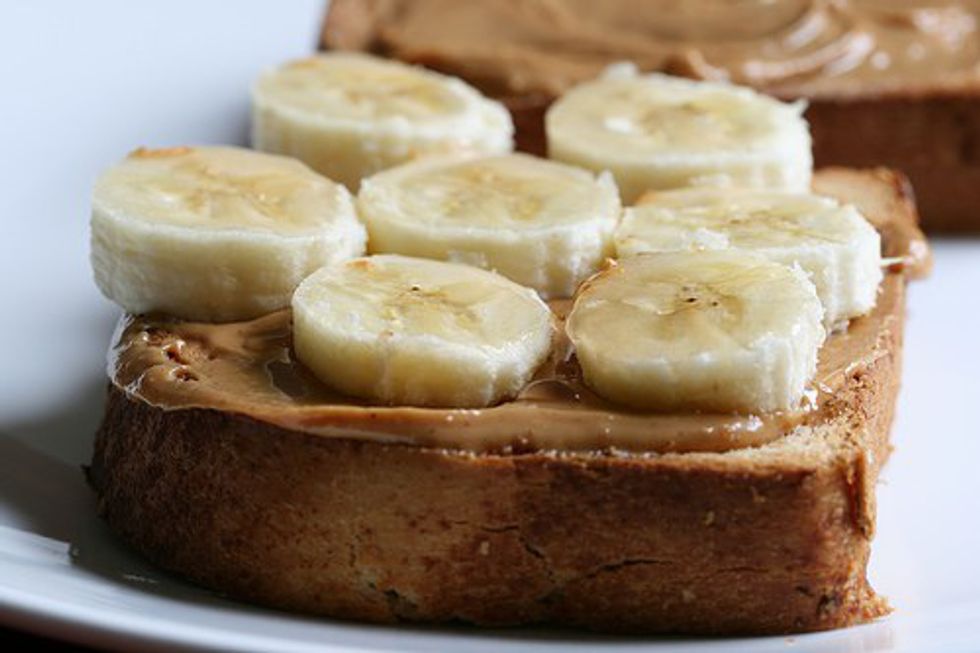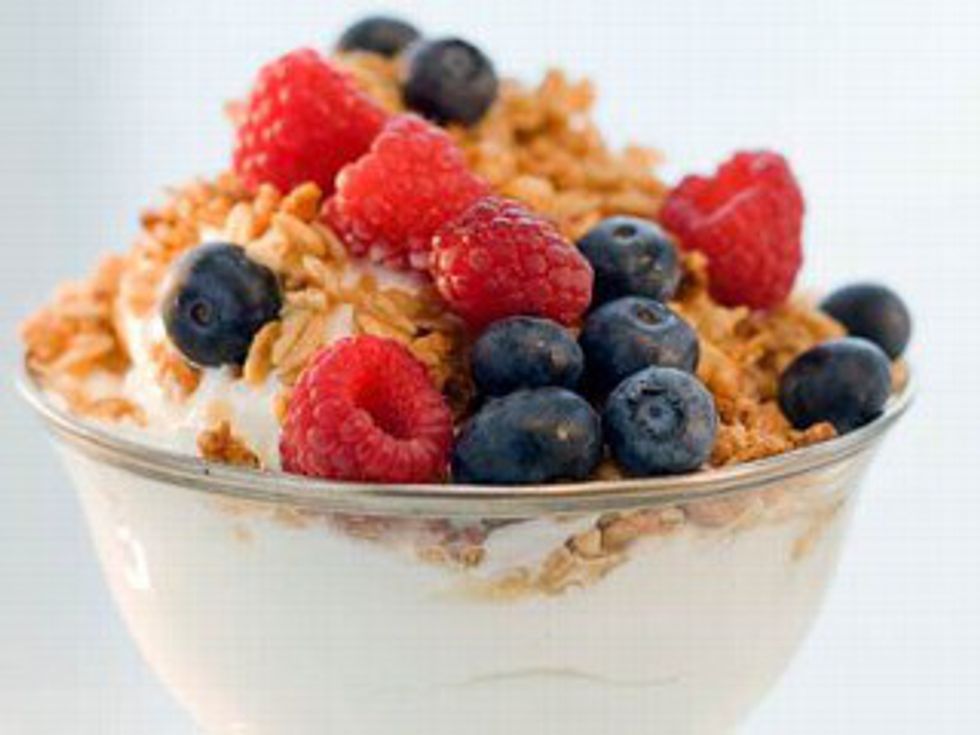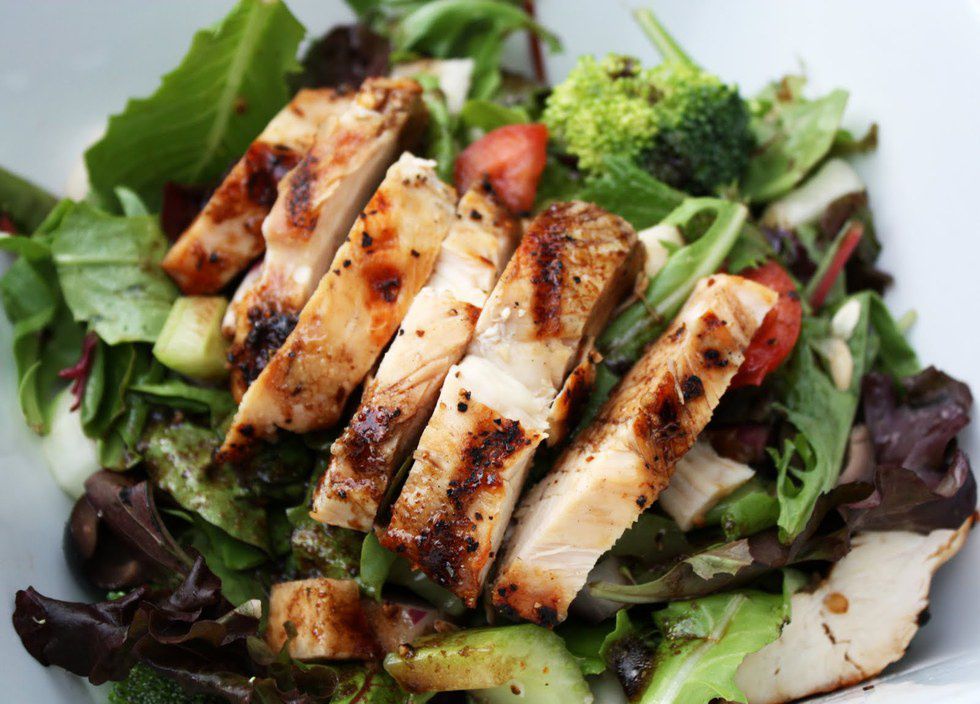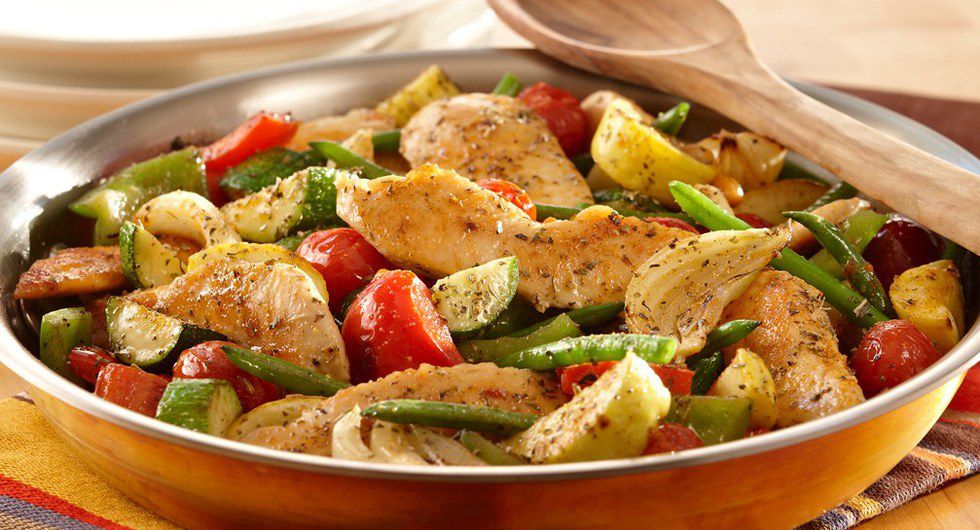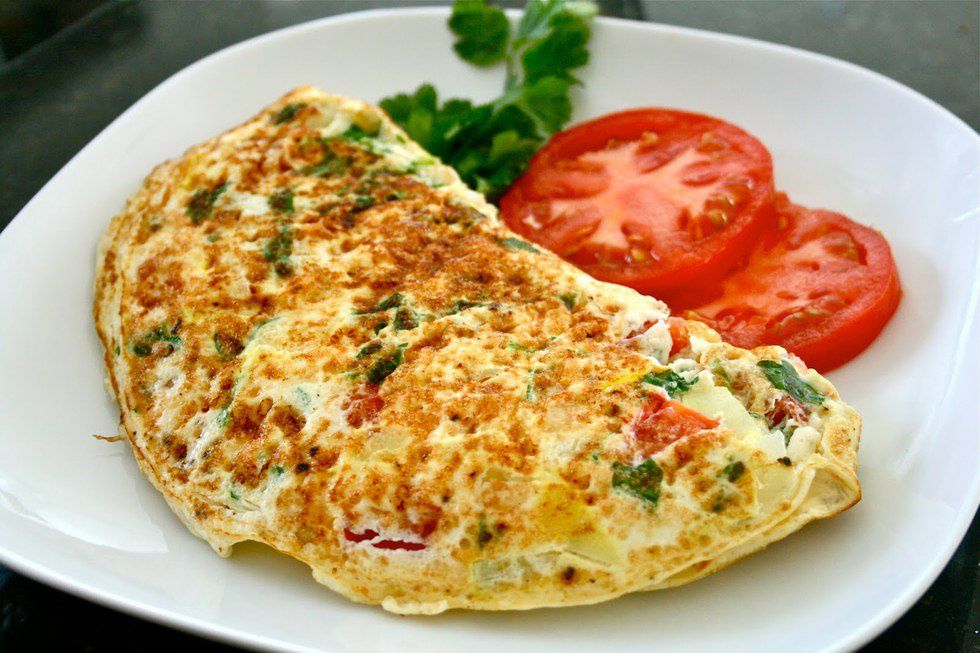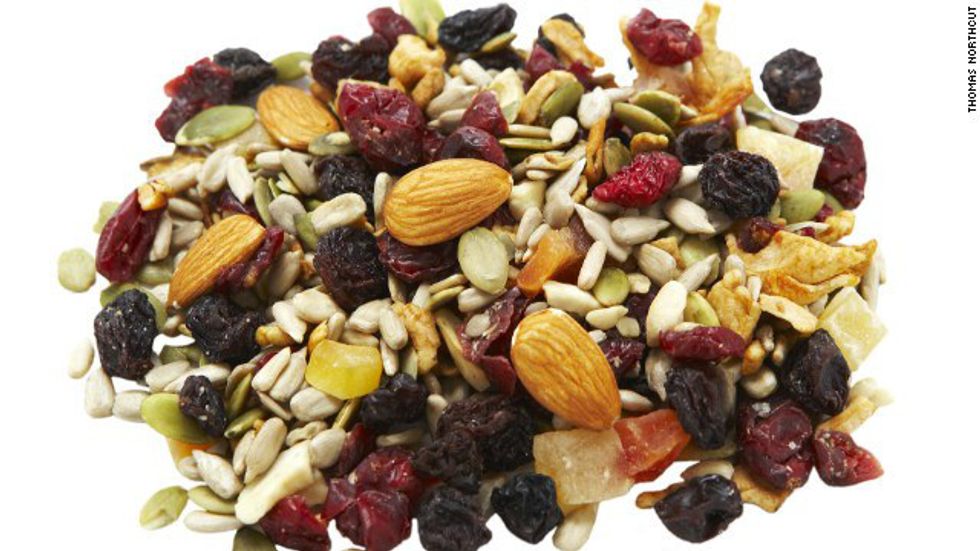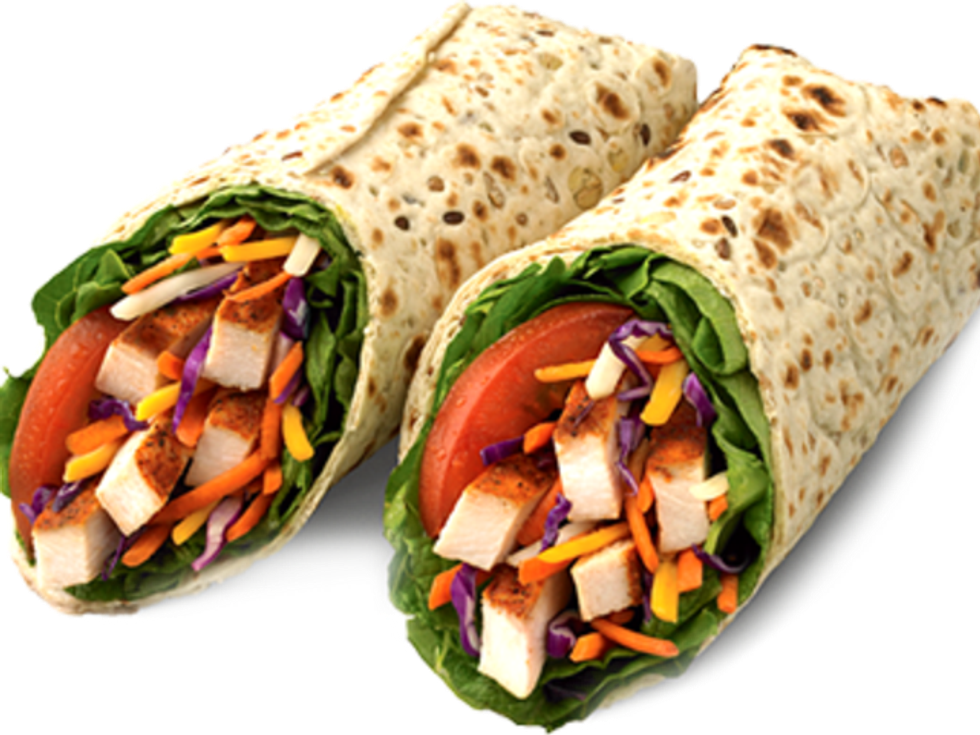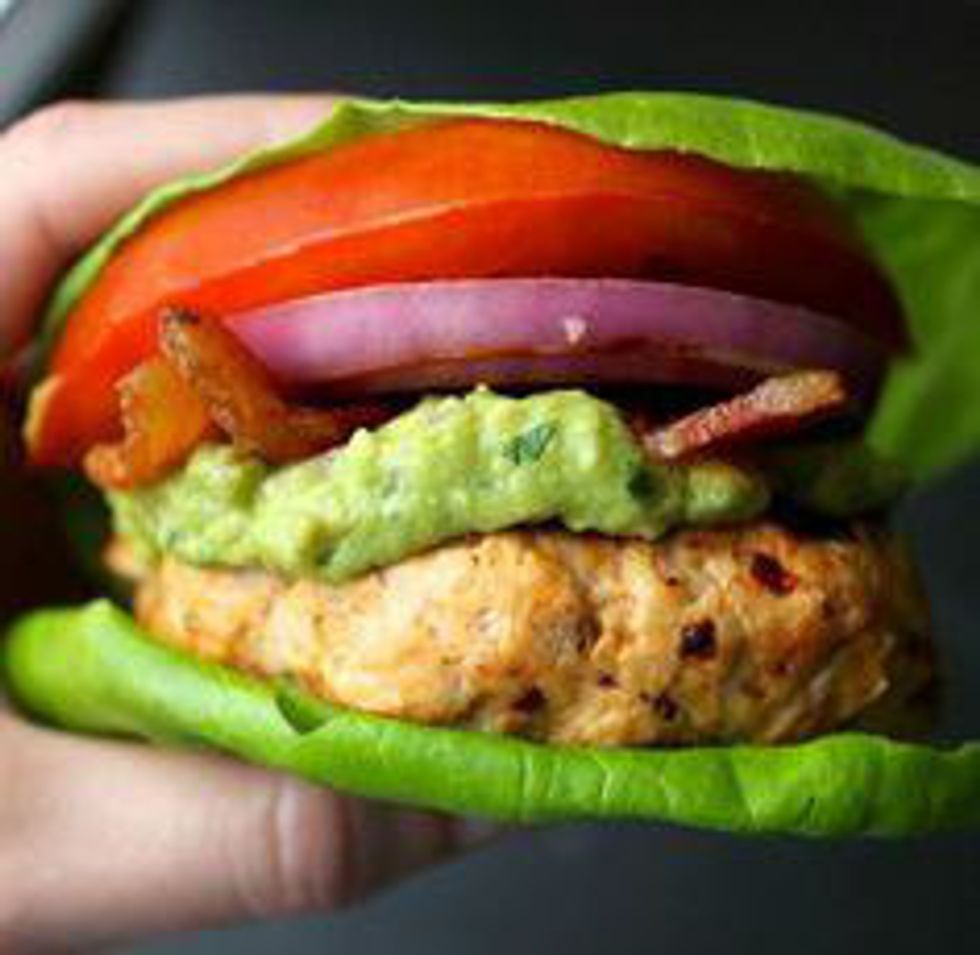Finding it difficult to resist unhealthy dining hall options, trying not to gain the freshman 15, or want some tips to help you continue a healthy lifestyle in college? Look no further, these ten tips will help you to look and feel amazing with nothing but a swipe into the dining hall!
1. Make peanut butter, banana, and whole grain toast.
Be sure to look for whole grain bread as opposed to wheat or white. Whole wheat breads are not as nutritious as whole grain breads, due to the removal of some of the kernel during the milling process, which results in a loss of the germ portion. Additionally, whole grains are an excellent source of fiber, can help reduce the risk of heart disease, and are packed with nutrients. Peanut butter is the good kind of healthy fat, which helps to keep you satisfied and full longer. This wholesome carbohydrate-packed treat is a perfect replenishing post-cardio snack. The peanut butter banana combo is a classic treat; Elvis himself would definitely approve.
2. Make a Greek yogurt parfait.
Greek yogurt is low in fat and sugar and is loaded with protein, which makes it a perfect balanced breakfast (or really any meal you like). If the plain yogurt is not sweet enough for your liking, add a splash of honey. Top it with anything, get creative! Granola, fresh fruit, nuts, or even shredded coconut make excellent toppings. The crunchy, nuttiness of the granola with the succulent fruit and velvety smoothness of the yogurt is a heavenly combination. The more varied the textures, the better!
3. When in doubt, salad it out.
Let’s be honest, there are many times when nothing else seems palatable. When choosing the base of your salad, keep in mind that dark greens like spinach pack more nutrients than lettuces like romaine, which tend to be higher in water content. Add different kinds of vegetables for color (it’s true -- you eat with your eyes first) and different textures. Try adding beans, such as chickpeas, for a healthy source of carbohydrate. Grilled chicken tends to be the go-to for salad eaters, but adding another source of protein like salmon or hard boiled egg can be a good way to jazz up your salad (let’s face it, we all get sick of eating it, sometimes). Add-ins like dried cranberries, feta cheese, and slivered almonds can make a huge difference, so be sure to add some fun stuff for extra crunch and flavor.
When it comes to dressing, be weary of some choices. Although olive oil and balsamic vinegar are much higher in calories than most dressings, it is much healthier than processed, lower calorie dressings that are full of chemicals. Alternatively, a spritz of lemon juice is an all-natural way to get the tartness of freshly squeezed lemon without packing on calories. Most importantly, be conscious of how much dressing you use. Putting dressing on the side and dipping can help you to use less while still getting the flavor in every bite.
4. Customize the made-to-order lines.
If you’re just not up for a salad and the prepared food isn’t looking so hot, don’t be quick to dismiss the made-to-order lines. Although these lines often boast their cuisine of greasy lo mein noodles and hefty alfredo pasta dishes, they can be customized to suit your clean-eating needs. Made-to-order lines often feature an array of widely assorted vegetables, from snap peas to sun dried tomatoes. Load up your plate with as many veggies as you like, and then ask one of the chefs to sauté your creation with a lean protein like chicken or shrimp. Be sure to ask for seasoning to add flavor without the empty calories that sauces like teriyaki often do. If you’re on a carb kick, hit up the stir fry side and add in some brown rice for a hearty, freshly prepared meal.
5. Take advantage of the omelet station.
Perfect for post-resistance training, a lovely breakfast, or even brunch, eggs are a wonderful source of protein. Plus, there is nothing fresher than having your meal made-to-order right in front of you; it is a difference you can taste. Veggies like onions, tomatoes, and spinach add tons of bold flavors, textures, and nutrients. Top with salsa or a bit of ketchup and serve with a side of fruit and whole grain toast. There you have yourself a perfectly balanced, scrumptious meal.
6. Create your own trail mix.
Trail mix is a great energy boost for between meals, or even a yummy dessert alternative. Combining mixed nuts with dried fruit is the healthiest way to go, but if you're feeling a bit naughty, add in some dark chocolate chips or M&Ms. Be sure to keep your portions in check; nuts are healthy in moderation but mindlessly snacking on them can add up quickly.
7. Make a wrap.
Try using hummus in lieu of mayo for the same creamy mouthfeel and less guilt. Add lots of lettuce, vegetables, and a lean protein like grilled chicken. On those days when you’re just too hungry to nibble on a salad, a wrap is a satisfying way to sneak in those veggies and still feel indulged.
8. Drink green tea.
Green tea is packed with antioxidants and other nutrients. Drinking multiple cups of green tea a day can promote fat loss and boost your metabolism, so be sure to choose it over a cup of coffee with cream and sugar!
9. Make a turkey burger with a lettuce bun.
The lettuce adds an extra crunch and is an ideal low-carb alternative to processed, empty calorie hamburger buns. Top with all of your favorite burger fixings like tomato, red onion, and hummus. Yum!
10. Stock up on fruit.
When your long-winded gossiping session has dwindled down and you and your pals finally decide that it’s time to get up and go to class, make sure to grab a piece of fruit on the way out of the dining hall. Apples are a wonderful snack to toss in your bag for a quick pick-me-up between classes. They are even more filling when paired with nuts or a nut butter, both of which can be found in on-campus convenience stores. Bananas make a wonderful on-the-go breakfast, but if you have extra time, pair it with oatmeal for an energizing, carbohydrate-filled meal.
Although these suggestions are helpful, the most important thing to bear in mind is to eat mindfully, a.k.a. eat when you're hungry and stop when you're full. When you spend excessive periods of time surrounded by unlimited food options, you're likely to get up and get more to eat, even if you're not really hungry. Eat slowly and be conscious of when you're starting to feel full. If you're not sure, it's best to wait a few minutes to allow your food to settle before you get up to peak at the choices again.
Remember that choosing whole foods will give you more energy than processed foods that are high in sugar. Taking the time to eat healthier will help you to remain focused in class and perform better all day long. So before you run to the vending machine for a quick pick-me-up, remember that healthy options are readily available in college; you just have to make the effort to seek them out.




